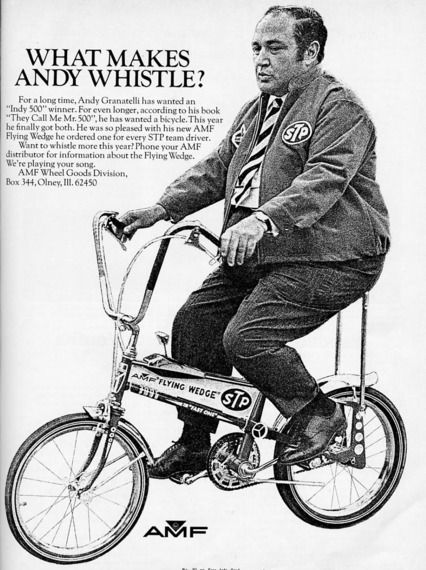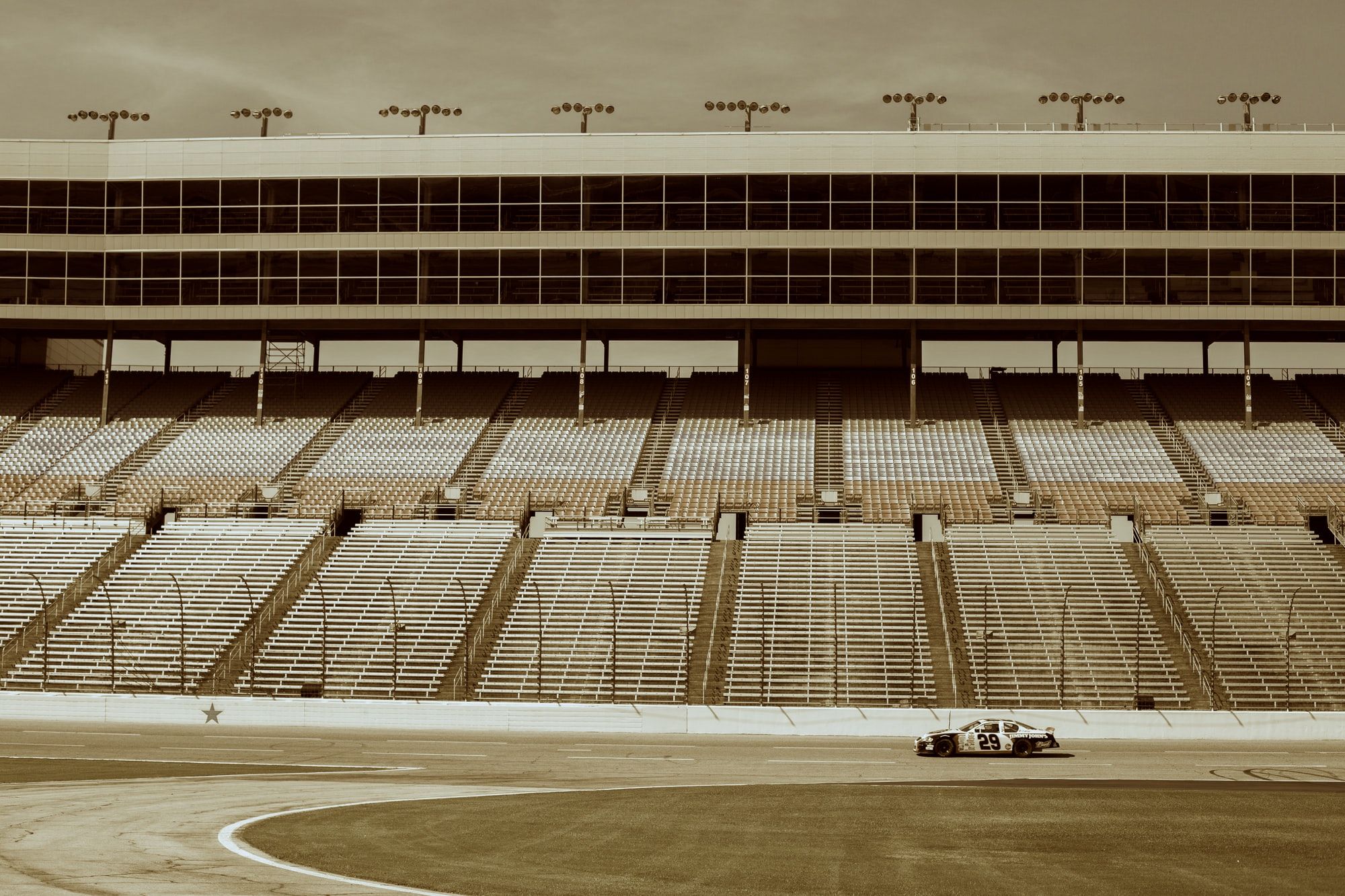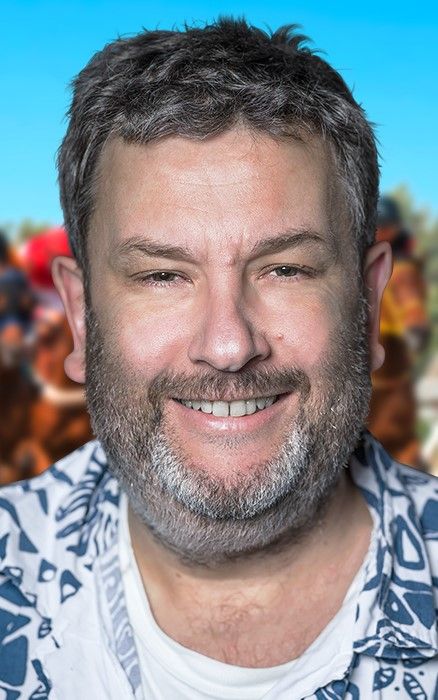The opening of Charles Dickens’ Tale of Two Cities – ‘It was the best of times, it was the worst of times’ – could have been written for the tragic circumstances of the 1973 Indy 500. Multiple fiery crashes and three deaths helped consign to a small footnote in history the first-ever hospitality suites offered at a major motorsports event that is still in operation today.
The suites themselves were so close to the action, so immersed in the race, that ‘the cars look like they're comin' up your drawers,’ said the man who designed them – in what might just be the most extraordinary sales-brag in VIP Hospitality history.
What we’re charting is the Indianapolis 500, such a storied race that it comprises one leg of the so-called Triple Crown of Motorsport, alongside the Monaco Grand Prix and the 24 Hours of Le Mans.
Only Britain’s Graham Hill has completed the triple, but some of the biggest names in motorracing have two of the three legs: Italian Tazio Nuvolari, France’s Maurice Trintignant, Britons Mike Hawthorn and Jim Clark, Americans Phil Hill, AJ Foyt and Mario Andretti, Jochen Rindt [Austria], Brazil’s Emerson Fittipaldi, Jacques Villeneuve [Canada], Colombian Juan Pablo Montoya and most recently the Spaniard Fernando Alonso.
![A 1945 edition of the Indianapolis Star celebrates the fact Tony Gulman, a local [hence the Hoosier reference] had purchased the speedway](https://www.journal.daimani.com/content/images/2020/04/indy-500-DAIMANI-Journal.jpg)
1973 was the year that Indianapolis Speedway owner Tony Hulman offered what are considered to be the first permanent suites in a motorsports venue that is still in operation: ‘The Turn Two Suites’ were private skyboxes on each of the 2nd and 3rd floors overlooking the pit-lane from across the track.
So to the tragedy: the weeks preceding the 1973 race had built to a fever-pitch amongst race fans at the thought of the circuit’s first ever 200-mph lap. An unofficial, tyre-testing time of 199.4 mph had been set two months prior to the mid-May race that traditionally takes place over the Memorial Day weekend.
Turbochargers and bolt-on wings had been introduced the season before, meaning IndyCars were generating more raw speed than ever, almost 20 mph faster according to media reports. In addition, 1000-plus horsepower engines were common, versus a regulated figure of between 550 and 700 today.
But the so-called Golden Era of IndyCar would end that weekend in what was widely considered the worst-ever race in the Indianapolis Speedway’s storied history.
Two and a half days of the racing week were lost to unseasonal rains. The race was not finally ‘won’, and only then in very subdued circumstances, until the Wednesday.
By that time two major crashes had taken the lives of three people, including drivers Art Polland and Swede Savage. A third crash saw an IndyCar pinwheel down the finish straight. The crashes happened either on warm-up laps or immediately after pitstops, and saw the ignition of all the cars’ full loads of 75 gallons of methanol.
The third fatality was pit-crewman Armando Teran, who worked for Patrick Racing. He was hit by a firetruck as both raced to free a driver trapped in his burning car. Patrick was sponsored by STP oil products, whose CEO was Andy Granatalli.
Here the fact that VIP Hospitality was being offered in private suites plays a role in the story because, as Granatelli told USA Today, in an article written to commemorate the 40th anniversary of that weekend, he had always watched the race from the pits.

However, instead of being in the pits, STP boss Granatelli was in one of the suites. It was from that suite that he had seen Teran standing by the pitlane wall alongside Granatelli's son Vince, who was Teran’s crew chief. Both were the same height and build and wore the same distinctive, heavily sponsored uniform.
‘They looked exactly alike,’ Andy Granatelli said in 2013, as USA Today reported, in the hushed tones of grief 40 years later. ‘I thought it was my son who had been hit.’
It was a measure of the leadership role that Tony Hulman had within the sport that the 1973 proved such a decisive turning point.
Initiatives that followed immediately included reducing fuel capacity to 40 gallons, shrinking the size of the bolt-on wings and cutting down the horsepower generated by turbochargers. On the facility-side, retaining walls were raised, catch fences improved and several banks of trackside seating were removed. There wouldn’t be an on-track fatality for a further nine runnings of the Indy 500.

As Sports Illustrated told readers in 1973: ‘Within 19 feet of the outer retaining wall at the Indianapolis Motor Speedway are the most expensive seats from which to view the Indy 500. They will be occupied by some 480 VIPs privileged to watch the race from the balconies of Tony Hulman's new ultra-exclusive motel suites'.
'It's the best place in the world to watch an auto race,' says Clarence Cagle, superintendent of grounds at the Speedway. 'The cars look like they're comin' up your drawers."
‘Speedway President Hulman occupies the suite closest to the track. There are eight suites on the top floor and 12 on the second. Only these two overlook the track, since the bottom floor is below the top of the retaining wall.
‘All were spoken for long ago, mostly by business firms like Firestone and Goodyear. Similar companies with similar interests in auto racing occupy the second floor. All suites are lavishly appointed. They will be used throughout the year for board meetings, sales meetings and such.’
The Turn Two Suites continue to thrill hospitality clients to this day, but now with suite inventory offered on all three levels. The suites are but one small part of the many tiers of hospitality access that the Speedway offers to their clients, with names that pay tribute to unique Indy history – the Gasoline Alley Suite, the Legends Row, and the Hulman Terrace, Brickyard and Turn Three Clubs.
This is what the Turn Two suites looked like during the 2013 Indy 500, the footage capturing two pace laps and the first four laps of the race proper.
The key VIP Hospitality benefits remain anchored around access to North America’s most famous motor race, and the Brickyard 400 in the NASCAR series.
But it’s a sign of the times too that for a single season-long purchase Turn Two Suite-holders are offered benefits that take in everything in the ‘entertainment space’ that the Speedway ownership has now diversified into: from hangar passes for when the Red Bull Air Race comes to town, to guaranteed access to the Brickyard Crossing golf course, which includes four holes laid out within the century-old Speedway racetrack itself.In another first, it was announced this week that a local police officer shot dead in the line of duty will be the first person to have a funeral service conducted at the Indianapolis Motor Speedway which has staged memorial services and ‘celebrations’ before but never a funeral.Photo by Caitlyn Wilson / Photosplash


